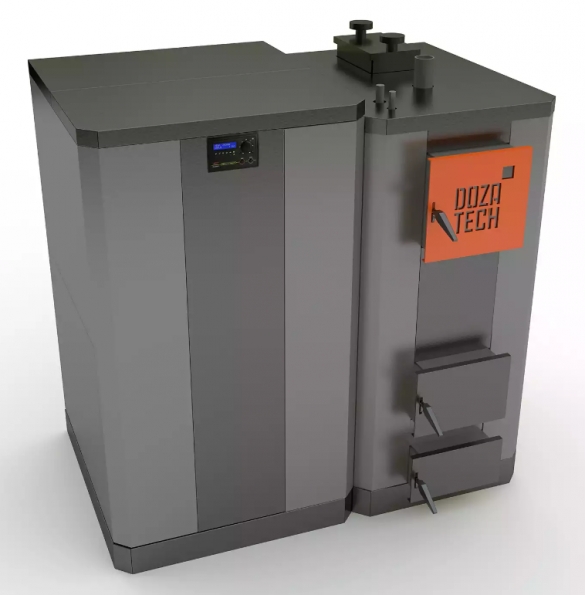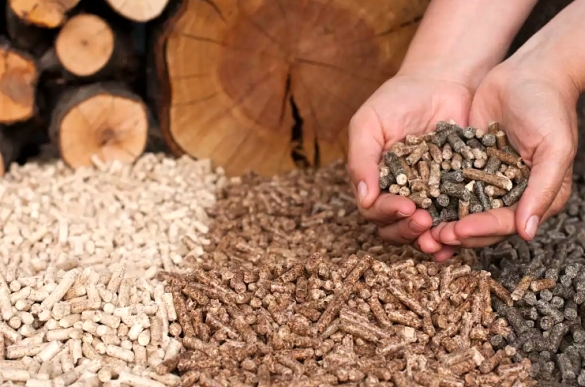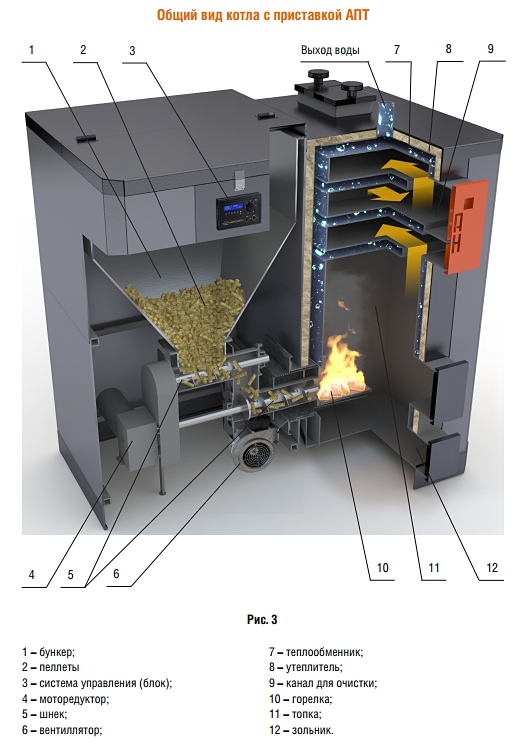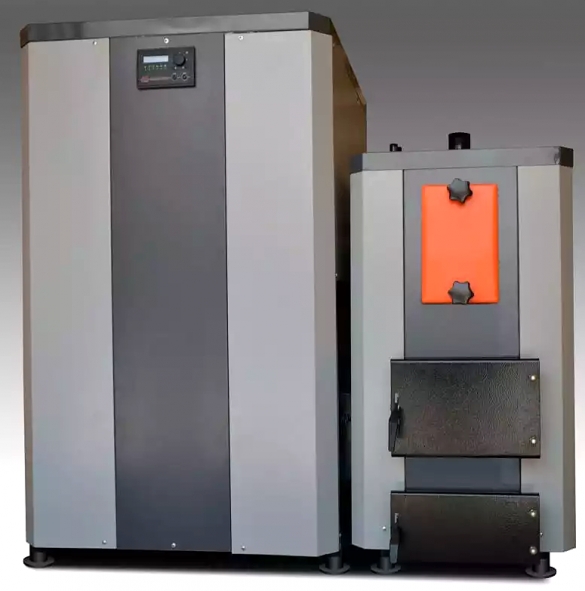The article was prepared with the participation of DOZATECH specialists
Despite the fact that our country is one of the largest exporters of blue fuel, one cannot speak of widespread gasification. For many consumers in Moscow and Siberia, the cheapest way of heating is still unattainable, and it is not a fact that it will be available in the future. Therefore, we have to look for alternative sources of heating, fortunately, the choice in this area is impressive. And in recent years, the range of heating equipment has been replenished with an interesting unit - a pellet boiler. Let us dwell on this type of equipment, for which we consider the following aspects:
- What is a pellet heating boiler and what fuel does it run on.
- Unit device.
- Advantages and disadvantages of a pellet boiler.
- What to look for when choosing a unit.
What is a pellet boiler
In fact, this is a kind of solid fuel boiler, but designed for a certain type of fuel (pellets) and with the possibility of full or partial automation of the workflow.
It is the ability to function offline with minimal intervention from the owners that pellet boilers are fundamentally different from conventional, solid fuel ones.
They have a higher efficiency factor (coefficient of performance) - both due to the characteristics of the pellets and due to the design features. Pellet boilers can be either highly specialized - designed only for pellets, or combined (universal) - capable of running on wood or coal, some models work on almost any biomass, husks, wood waste and the like can be used as fuel.
Alexander DimitrevRepresentative of DOZATECH, manufacturer of pellet boilers
With a certain design of the boiler, any biomass of very low calorific value can be burned in it - these are wood chips, bark, woodworking waste, agricultural waste, sunflower husks and more.

Pellets, or wood pellets, are an environmentally neutral fuel, obtained mainly from waste from the woodworking industry (chips, shavings, bark), but they can also be from crop waste. Pellets appeared in the thirties of the last century, when the first plant was invented and tested in Idaho for pressing waste from local sawmills into pellets. Under strong pressure, the raw mass is heated, which provokes the formation of lignin, which binds the smallest particles into dense, smooth granules. This allows you to refuse the use of chemicals - pellets are completely natural, safe, in terms of ecology, fuel. The diameter of the granules varies between 6-8 mm, the length is up to 50 mm. In European countries, pellets are standardized fuels and are produced according to the DIN plus standard.
In our country, their production is not so developed and supervised, the quality of the pellets, on which both the efficiency of the boiler and its performance will depend, is visually determined - white ones are better than gray ones. Unlike wood, pellets have low humidity and high density, which means that during combustion, more heat is released and a minimum amount of carbon dioxide is released. If we translate this property into numbers, for comparison, we get the following ratio - when burning a ton of pellets, the same amount of heat will be released as when burning 1.6 tons of firewood. The ash content will be only 0.5% of the burned volume, and the emitted flue gases will be colorless.
The approximate calorific value of pellets is 5 kWh per kilogram, but how close the real efficiency will be to theoretical data depends on the quality of the pellets themselves and on the performance of the boiler in which they will be burned.

Unit device
The pellet boiler itself consists of three main components:
- Furnace - equipped with a special burner (retort or flare) and two doors (control, cleaning).
- Convective zone - a heat exchanger is located in it: it can be vertical, horizontal or combined, tubular or plate type. In the convective zone, the heat carrier is heated in the heat exchanger by gases released during the combustion of pellets. Most units are designed for heating only and have one circuit, but in some models there are two circuits: heating and water heating.
- Ash pan - combustion wastes enter it (insignificant during normal afterburning), which are periodically removed through the cleaning door.
However, the listed nodes are, although the main, but only a part, for the operation of which the APT prefix (automatic fuel supply) is required. This attachment includes the following components:
- Bunker - a container for pellets of a certain volume, from which the pellets enter the furnace, can be built-in or external.
- Auger - portionwise delivers granules to the burner as needed, driven by a gearbox.
- Fan - necessary to maintain the combustion process, since the boiler design does not provide for natural draft.
Since the pellet boiler is an automated system, its device also includes a control unit with a display, which displays information about the current state, and through which the main operating parameters are set. The controller regulates the ignition of the burner, the supply of granules and air, and the stop, as the desired temperature is reached, maintaining the heating mode selected by the owner.

Depending on the capacity of the bunker and the selected mode, one backfill can last for several days, or a week or even more.
To make the heating process fully automatic, the boiler can be connected directly to the storage - the pneumatic tube will feed the pellets into the hopper as it is emptied.
Advantages and disadvantages of a pellet boiler
One of the main advantages of pellet boilers is efficiency, according to this indicator they are second only to gas main heating. This is due to the high efficiency of the equipment, and the high calorific value of pellets, and their affordable cost. The second aspect that attracts the consumer is process automation. Unlike other solid fuel boilers, pellet boilers do not need constant monitoring and regular manual fuel supply. In units running on diesel fuel, it also wins in terms of environmental friendliness - no smells and black smoke.
The main disadvantage of these units is the solid price - these are the most expensive solid fuels, the cost of an automated European-made station is measured in hundreds of thousands, domestic ones are a little cheaper. Not every private owner can afford such injections into the heating system of his house. However, given the durability of the equipment, which today is close to two decades, this is a wise investment in the long run.

In addition to the high cost, the disadvantages include volatility - automation needs electricity, and if a shutdown for several hours (up to 10 on average) is acceptable and does not knock down the settings, then a longer one will stop the boiler. The station must be equipped with an independent power source, which will further increase the cost of the system.
What to look for when choosing a unit
Despite the relative "youth" of this type of solid fuel, the market has a large selection of boilers of foreign and domestic production. To choose the best unit for your conditions, you should pay attention to several important parameters.
Power - each manufacturer has a fairly wide range of models, including both domestic and industrial units. As with any heating equipment, power is measured in kilowatts (kW), the power of household models starts from 15 kW. Since heating a room with average heat loss requires about 1 kW per 10 m², such a boiler is able to heat a house of 150 m². However, it should be borne in mind that the boiler is needed with a small margin.
